Imagine a tiny, coin‑shaped “first‑responder” constantly patrolling your bloodstream. Within seconds of a cut, it spins into action, forming a plug that stops the bleed. That miracle is possible because of the way a platelet is built – its platelet structure directly determines its function. In this friendly walkthrough we’ll explore exactly how the pieces fit together, why platelet count matters, what can go wrong, and how doctors test the system. Grab a cup of tea, and let’s dive into the fascinating world of these miniature superheroes.
Platelet Anatomy Basics
Resting shape – the discoid “coin”
When you look at a platelet under a microscope it appears as a flat disc, roughly 0.5 × 3 µm. This shape isn’t random; it’s held together by a tight coil of microtubules that sit just beneath the plasma membrane. Each microtubule is a tube made of 13 tubulin subunits, forming a rigid scaffold that keeps the platelet “coin” flat and ready to roll. (source)
Internal skeleton – actin cytoskeleton
Beyond the microtubule ring, an elaborate actin network fills the interior. Think of actin as the platelet’s muscle fibers. In the resting state it maintains the cell’s integrity, but when activation begins the actin filaments rapidly reorganize, creating filopodia (tiny fingers) and lamellipodia (broad sheets) that let the platelet spread over a wound. (source)
Granules & organelles – the chemical toolbox
Platelets are packed with tiny storage units. Alpha granules hold clotting proteins like fibrinogen and growth factors; dense granules stash ADP, calcium, serotonin, and ATP. Mitochondria generate the energy needed for rapid responses, and the open canalicular system acts like a highway for these molecules to reach the surface. (source)
Surface receptors & glycocalyx – the sensing antennae
The platelet membrane is studded with receptors that detect danger. GPIb‑IX‑V grabs von Willebrand factor (VWF) on damaged endothelium, while the integrin αIIbβ3 (also called GPIIb/IIIa) binds fibrinogen once the cell is activated. Under the membrane lies a thin glycocalyx that helps the platelet slide along vessel walls without sticking where it shouldn’t.
How Structure Enables Function
Adhesion – the first handshake
When a blood vessel is nicked, the subendothelial collagen is exposed. The platelet’s GPIb receptor instantly latches onto VWF that’s bound to collagen, anchoring the cell to the wound. This initial stick is all thanks to the membrane receptors we just described.
Activation & shape change – the dramatic makeover
Once adhered, internal signals trigger a rapid disassembly of the membrane‑attached actin skeleton. The microtubule coil relaxes, allowing the cell to balloon, extend filopodia, and flatten into a spread‑out shape. This morphological shift dramatically increases the surface area for more receptors to engage. (source)
Aggregation – building the plug
Activated αIIbβ3 integrins change their shape and become “sticky.” They capture fibrinogen molecules that act like bridges, linking neighboring platelets into a tight cluster. This platelet “clump” is the core of the provisional clot.
Secretion – calling reinforcements
Inside the dense granules, ADP and calcium are waiting. When the granules fuse with the membrane, they dump these messengers into the surrounding blood. ADP attracts more platelets, calcium amplifies the clotting cascade, and serotonin helps constrict the vessel, reducing blood flow to the injury.
Contraction – the final squeeze
Myosin motors pull on the actin filaments, pulling the fibrin mesh tighter. This “clot retraction” not only stabilizes the plug but also squeezes out excess serum, bringing the wound edges closer for healing.
Platelet Count Explained
Normal range and what the numbers mean
In a healthy adult, the platelet count typically sits between 150 × 10⁹/L and 400 × 10⁹/L. Automated blood counters actually measure the cell’s size (mean platelet volume, MPV) and use electrical impedance to estimate how many are passing through each second.
When count and function diverge
You can have a perfectly normal count but still bleed excessively if the platelets can’t stick or release granules. Aspirin users often fall into this category: the drugs block thromboxane A₂, a key activator, without lowering the actual count.
Thrombocytopenia causes
Low platelet numbers—called thrombocytopenia—can stem from:
- Reduced production (bone‑marrow failure, certain chemotherapy)
- Immune destruction (immune thrombocytopenic purpura, drug‑induced antibodies)
- Splenic sequestration (enlarged spleen traps platelets)
- Infections or viral illnesses that temporarily suppress megakaryocytes
Understanding the underlying cause is essential because the treatment differs dramatically.
Beyond the count – MPV, PDW, PCT
| Parameter | What it reflects | Clinical clue |
|---|---|---|
| MPV (Mean Platelet Volume) | Average size of platelets | High MPV may indicate increased production (e.g., after bleeding); low MPV can suggest older, exhausted platelets. |
| PDW (Platelet Distribution Width) | Variability in size | Greater variability often points to a mixed population of young and old platelets. |
| PCT (Plateletcrit) | Volume occupied by platelets in blood | Useful in assessing overall platelet mass, especially in massive transfusion settings. |
Common Platelet Disorders
Inherited defects – the genetic puzzles
Glanzmann thrombasthenia is caused by a missing or defective αIIbβ3 integrin, so even though the platelet sticks, it can’t aggregate. Bernard‑Soulier syndrome, on the other hand, lacks the GPIb receptor, preventing proper adhesion to VWF. Both illustrate how a single structural protein can cripple an entire function.
Acquired disorders – the environmental culprits
Medications like clopidogrel block the ADP receptor P2Y12, dampening activation. Liver disease can lower platelet production, while chronic inflammation often drives the bone marrow to release larger, more reactive platelets.
Platelet‑rich plasma (PRP) therapy – a modern twist
Clinicians sometimes concentrate a patient’s own platelets to inject into joints or wounds. The premise is simple: more platelets = more growth factors, better healing. But the therapy only works if those platelets retain a healthy structure and granule content. (source)
Emerging biomarkers – the future of diagnosis
Recent studies have shown that surface proteins like CD36, CD41, and CD61 change in diseases ranging from diabetes to cancer. Measuring these markers can give clinicians a sneak peek at platelet health beyond just the count. (source)
Testing Platelet Function
Light‑transmission aggregometry (LTA)
This classic lab test mixes a platelet‑rich plasma sample with agonists (ADP, collagen, thrombin). The more the platelets clump together, the clearer the solution becomes. It’s like watching a snow globe settle – the clearer it gets, the stronger the aggregation.
Flow‑cytometry – the high‑tech snapshot
By labeling activation markers like P‑selectin (CD62P) or the activated conformation of αIIbβ3 (PAC‑1 antibody), flow cytometry quantifies the percentage of platelets that have turned “on” after a stimulus. This method is fast, precise, and increasingly used for bedside decision‑making.
Point‑of‑care impedance devices
Devices such as VerifyNow or Multiplate measure the electrical resistance change as platelets aggregate on a sensor. They’re handy in clinics because results appear in minutes, guiding immediate therapy decisions.
Best practices – avoiding false reads
Platelets are fussy: EDTA (the common anticoagulant) can make them “round up,” giving a falsely low count. Using citrate or heparin preserves their natural discoid shape. Also, keep samples at room temperature and test within two hours for reliable results.
Balancing Benefits and Risks
Why platelets are lifesavers
Beyond sealing cuts, platelets release growth factors that promote tissue repair, help clear microbes, and even support wound‑healing pathways in the skin and gut. In short, they’re multitasking heroes.
When they become troublemakers
In atherosclerotic arteries, the same sticky receptors can cause a platelet to latch onto a plaque, triggering a clot that blocks blood flow— leading to heart attacks or strokes. This paradox shows that “more” isn’t always “better.”
Lifestyle choices that tip the balance
Regular exercise, omega‑3‑rich fish, and moderate alcohol can make platelets less “hyper‑reactive.” Smoking, high‑sugar diets, and chronic stress push them toward a pro‑clotting state.
Therapeutic modulation – the art of fine‑tuning
Antiplatelet drugs (aspirin, clopidogrel, ticagrelor) intentionally dampen activation to prevent heart attacks. New research is exploring selective inhibitors that block only the harmful pathways while preserving the essential clotting function. (source)
Shared decision‑making – your voice matters
If your doctor suggests an antiplatelet, ask about the trade‑offs: “What is my bleeding risk versus my heart‑attack risk?” Knowing your baseline platelet count, any history of bruising, or family clotting disorders helps tailor the plan.
Wrapping It All Up
We’ve traveled from the microscopic coil of microtubules that keeps a platelet flat, through the bustling actin network that powers shape‑shifting, to the granules that launch chemical fire‑works when injury strikes. All of these structural pieces work together to create the remarkable platelet structure function we rely on every day.
Understanding the anatomy helps you make sense of a simple blood test, recognize why certain medicines affect you, and appreciate the delicate balance between stopping bleeding and preventing dangerous clots. Whether you’re a patient glancing at a lab report or a curious reader wanting to know why a small cut stops bleeding so fast, remember: the real magic lies in the platelet’s design.
What’s your experience with platelet‑related health issues? Have you ever wondered why a simple bruise can sometimes linger longer than expected? Feel free to share your story in the comments, and if you have questions about your own platelet count or medications, don’t hesitate to ask. Let’s keep the conversation rolling – after all, learning together is the best way to stay healthy.

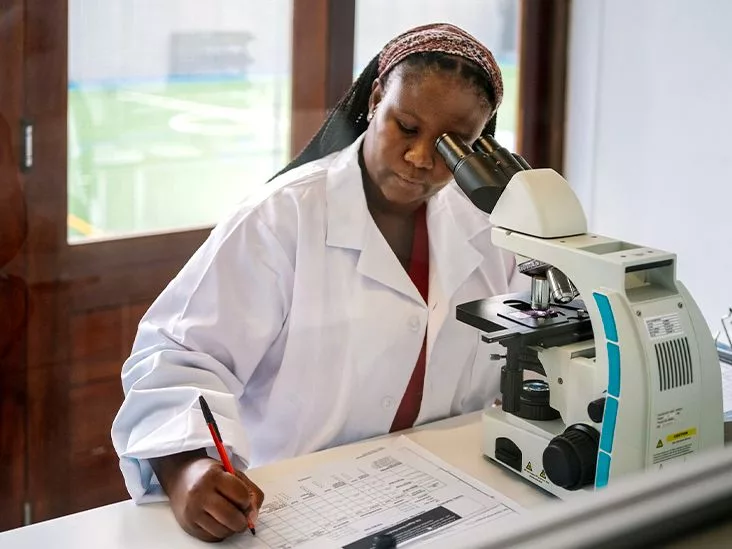



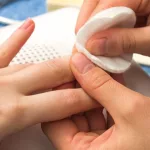

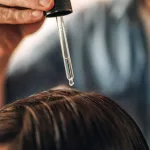

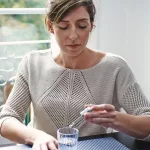


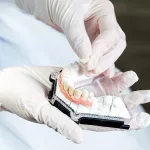





Leave a Reply
You must be logged in to post a comment.